How to Prepare Bicycle for Winter Storage
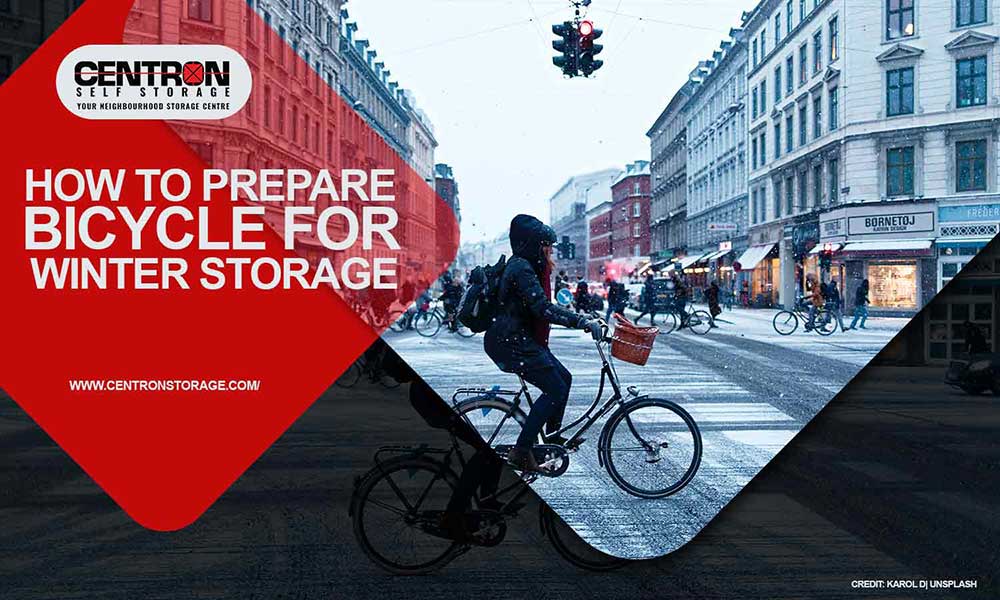
Canadian winters are not great for cycling. With severe temperatures dropping as much as -14°C on average, icy roads, and unexpected rain and snowstorms, it just makes it difficult to take a bike out in the snow — not to mention hazardous for your health and safety. It’s best to keep your bikes locked up in storage until the weather warms.
However, storing a bicycle during the cold season isn’t as simple as parking it in the garage. There are certain steps you need to take to keep your bike in pristine condition while in winter storage. Otherwise, you may end up spending quite a bit to replace damaged parts.
To get you started on the right foot here are a few things that you can do before storing your bicycle for the long cold months.
Make sure your bicycle is clean and lubricated
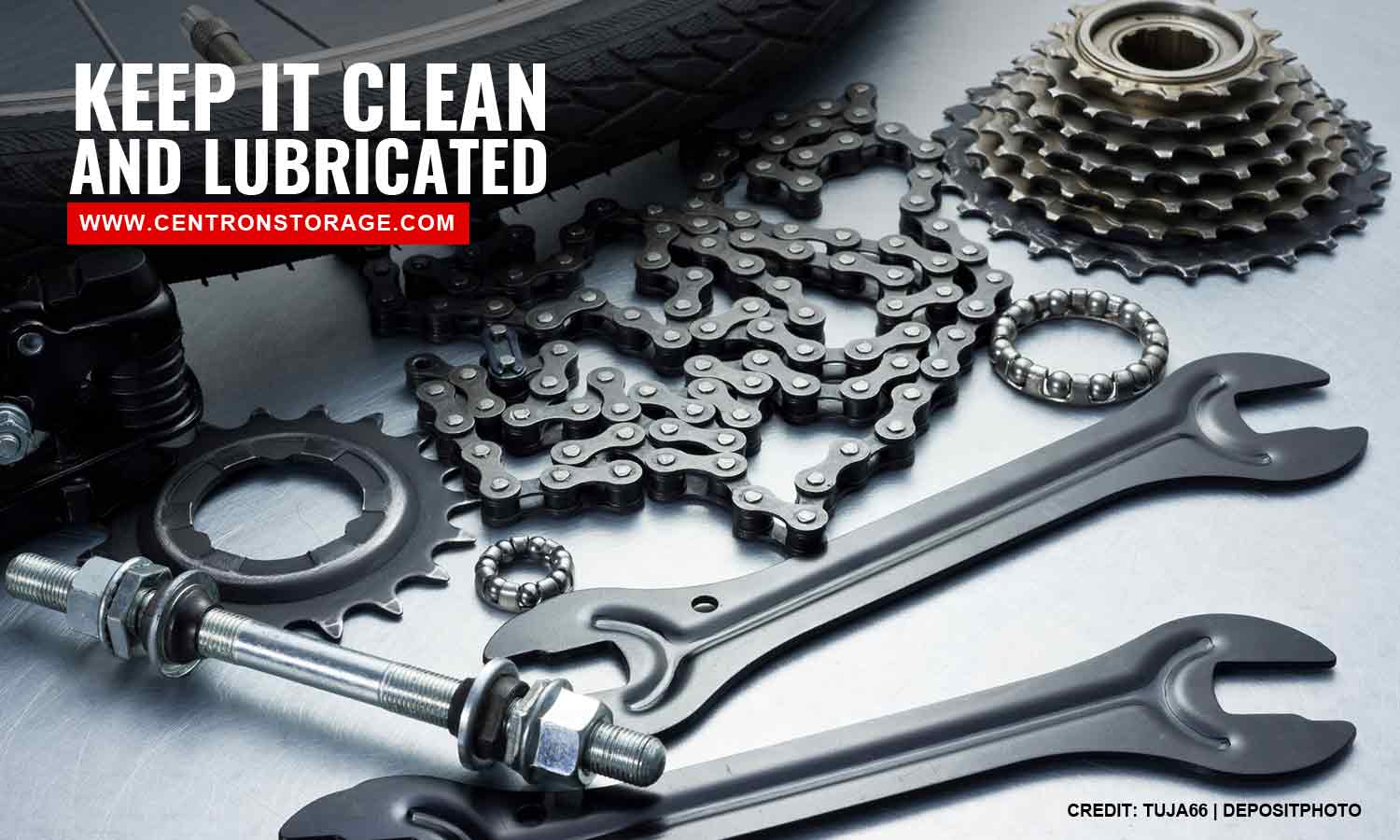
Your bicycle is basically composed of a collection of moving parts. Though these components are generally made to withstand heavy use, exposure to mud, grime and debris can cause them to deteriorate. Furthermore, these substances can seep into gaps and openings, causing parts to freeze-up, especially after they harden.
As part of proper maintenance, make sure your bicycle is thoroughly cleaned and lubricated before storage. This will help prevent corrosion and performance issues as well as keep your bike looking good.
Make sure to have these materials ready before cleaning the bicycle:
- Clean rags
- Brushes
- Soap or general-purpose cleaner
- Degreaser
- Lubricant
- Bike stand
- Water
- Disc brake cleaner
- Rubbing alcohol
The majority of bicycle components can usually be cleaned by wiping them carefully with a dry or damp rag. However, some parts may require careful bruising and relubrication to get rid of most of the debris, dirt and grime.
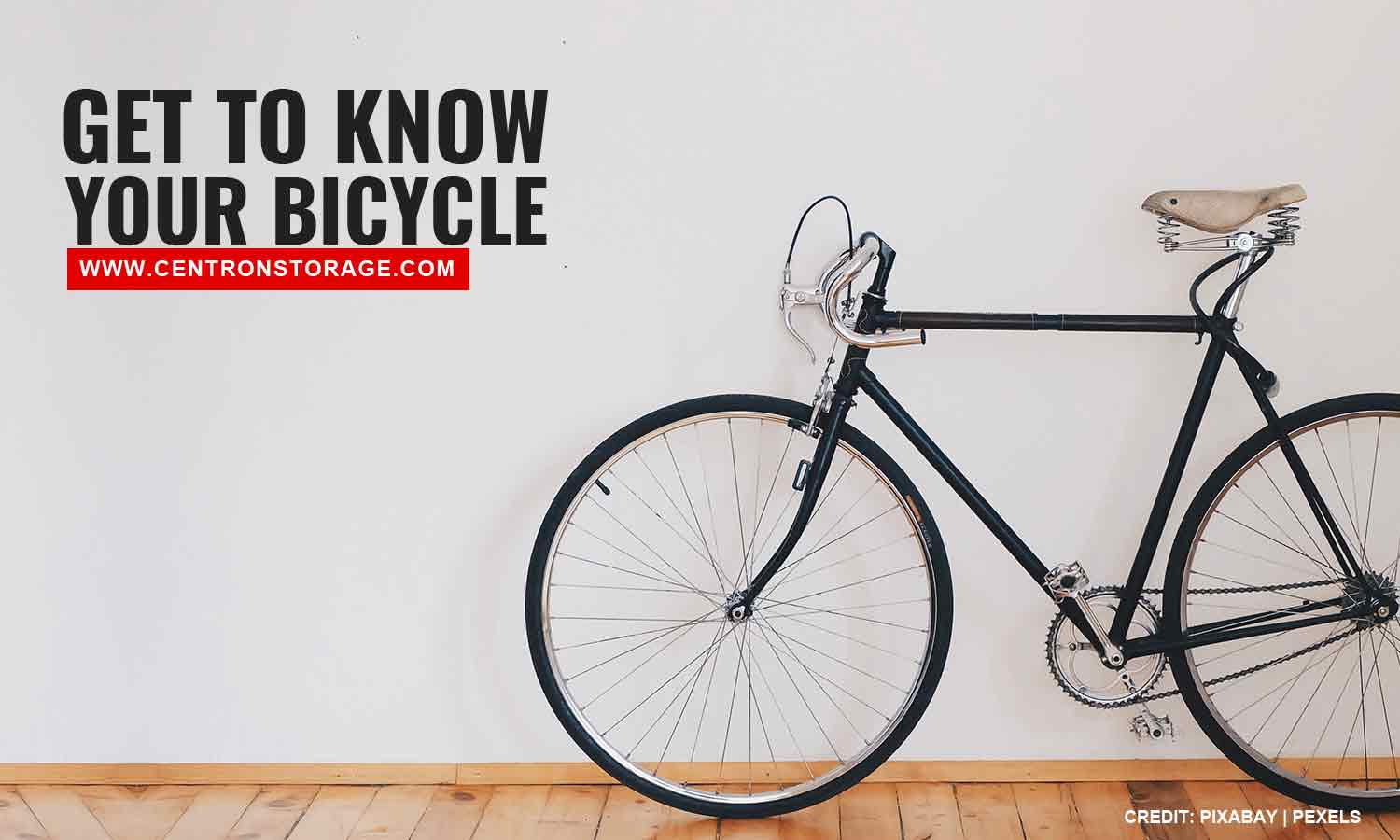
Pay attention to these important bicycle parts:
- Bike Frame – The whole bike frame should be washed using warm soapy water for the best results. To remove dirt and grime, use a brush and carefully scrub them off.
- Disc Brakes – If your bike has disc brakes, keep soap away from the rotors as much as possible. When cleaning the rotors, use a disc brake cleaner or some rubbing alcohol then wipe them down with a clean rag.
- The Bike Chain – Bicycle chains need lubrication and cleaning to reduce wear and tear during storage. If the chain isn’t too dirty, it can be easily cleaned using a degreaser and a rag. Otherwise, use a chain cleaner to remove the thick layers of grime from your chain. After the degreaser has dried, add a few drops of chain lubricant then let it dry. Be sure to wipe the excess after so as not to attract more dirt.
- Brake and derailleur Levers, Cables and Assemblies – Lever pivots, barrel adjusters and cables need to be lubricated to keep them functioning properly. For the assemblies, apply lube to the pivot points and avoid getting any of it on the brake pads. The gunk build-up from the pulleys can easily be scraped away with a flathead screwdriver. Surface cleaning can easily be done by using soapy water.
Give your bike a tune-up
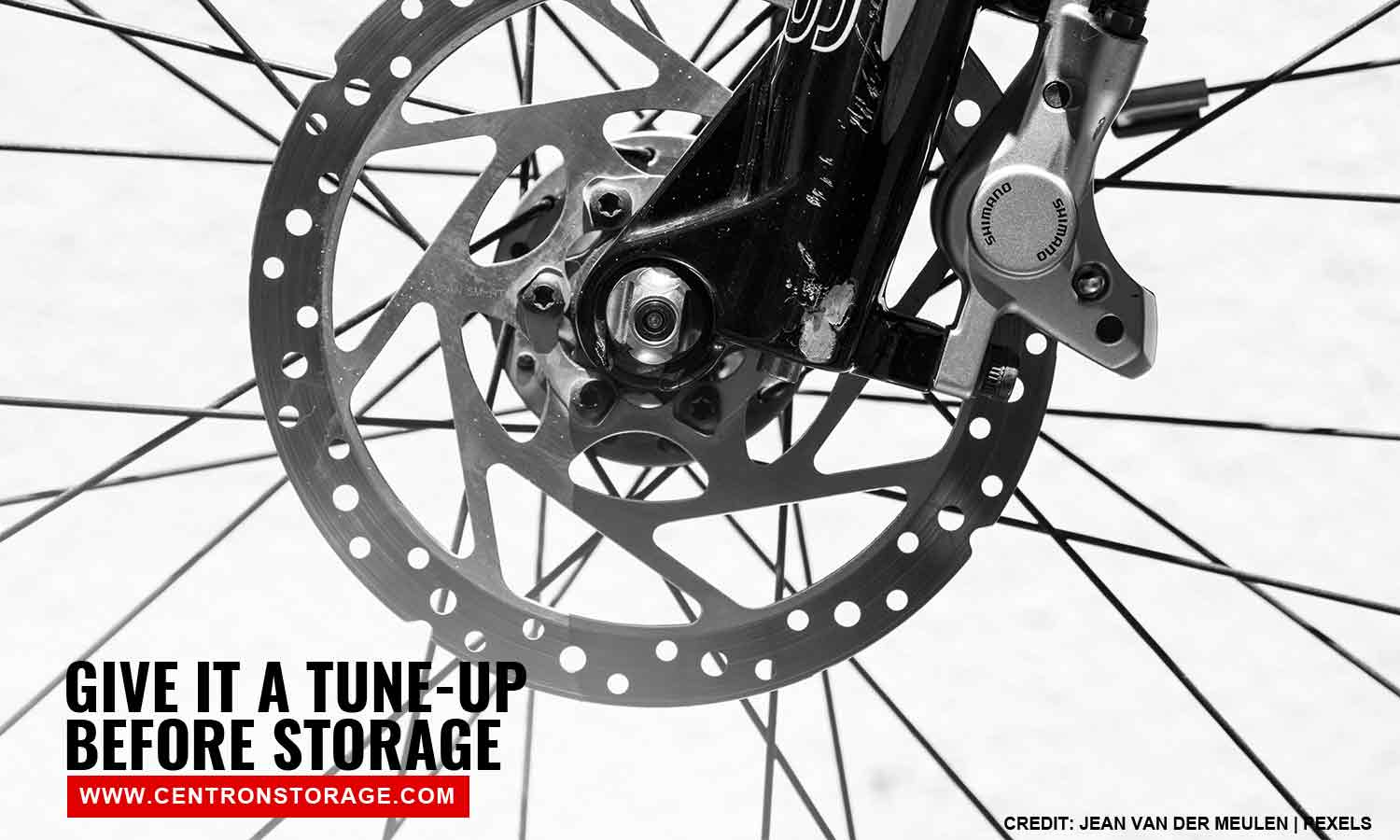
Once cleaning is done, this will provide you with the perfect opportunity to check your 2-wheeler for any parts that are worn out, damaged, or rusted. If there are any damaged components, they should be repaired. Worn-out and heavily corroded parts must be removed and replaced. In addition, you should also make the necessary adjustments and repairs.
- Check and adjust the brakes
Checking the brakes is a crucial part of bicycle maintenance since having a malfunctioning braking system can compromise your safety. Be sure to check the following areas and make adjustments or replacements when necessary:- When your brake pads show signs of wear and tear such as metal poking through the pads, they should be replaced right away.
- Check the tire rims for any imperfections, especially when they make a grinding noise during braking. These should be sanded down.
- Brake cables that show signs of rust should be replaced right away.
- Check the gears, headsets, and wheels
If you have problems such as clicking gears, loose headsets, or misaligned wheels, the best course of action is to take your bicycle to a mechanic. If you’re planning to do it yourself, make sure to check the user’s manual.
Keep the tires inflated
If you’re planning to store your bike on the ground, then make sure to check both tires regularly to make sure they are fully inflated. Cold temperatures cause air pressure to drop. This means both tires will lose one to two PSI every 10°F (-12.22°C).
Once the tires are deflated, the full weight of the bicycle will be resting on them, pressing the sides of the rims through the rubber. This will weaken the tire’s structure and cause it to deteriorate faster. To prevent this, make sure to inflate the tires every time there’s a considerable drop in pressure.
Pick a good place to store your bicycle

Choosing a good place to store your bike is essential for keeping it safe from the harsh winter climate. Ideally, it’s best to keep it indoors in a dry place with temperatures not dropping below 66.2°F (19°C) and where it’ll be safe from getting stolen.
If you need more suggestions, here are some great bike storage ideas for the winter:
- Storing Your Bike Outdoors
While it’s not recommended, it is still possible to store your bike outside and keep it safe from the elements. Here are things to do to keep your bike safe in an outdoor space.- Use a plastic bike cover.
- Lubricate your bike with general-purpose waterproof grease.
- Use a shopping bag to cover the bike seats.
- Secure your bike with chains to prevent theft.
- Keep your bike off the ground if possible with bike racks or it using vinyl-coated wall and ceiling storage hooks.
- Indoor Storage
A closed indoor area is an ideal place to keep your bike safe during the long winter months since there you don’t have to worry about the elements affecting your two-wheeler. Furthermore, this will keep your bike safe from thieves.
However, there are a few things to consider when keeping your bicycle inside the house:
- If you’re keeping your bike in the basement, make sure the area is fully sealed. Keep your bike away from areas where water might drip.
- Secure your bikes with bike racks or stands.
- Use vinyl-coated wall and ceiling storage hooks to keep your bike’s wheels off the ground.
- Do not store your bike in areas with a high degree of foot traffic.
Self-Storage Units
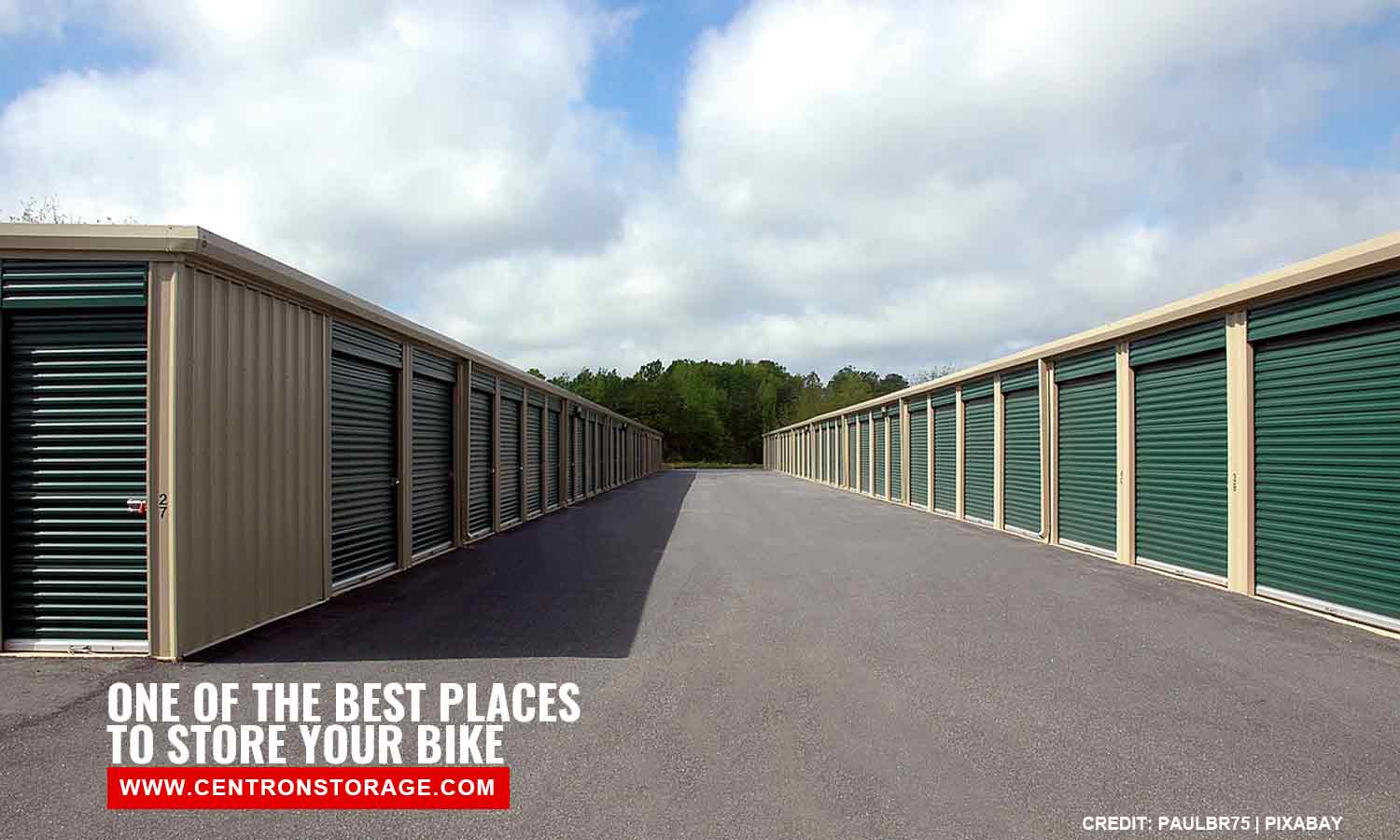
Self-storage units are great places to keep your extra items for the winter season. Storage units can be rented long-term or short-term and they come in a wide variety of sizes so it’s perfect for storing multiple bicycles n the same place
Furthermore, these units have features that make them one of the most effective bicycle storage solutions:
- Round the clock security
- Clean and dry indoor spaces
- Affordable rates
Keep these tips in mind so you can prepare your bicycle for those long winter months. Keeping your bike in good condition while in storage will minimize the amount of maintenance you have to do when you finally get to use it come spring.
If you’re looking for an excellent storage solution for bicycles in the North York area, contact Centron Self Storage at (647) 749-1396. We offer great deals and will be happy to provide you with the best service possible.
